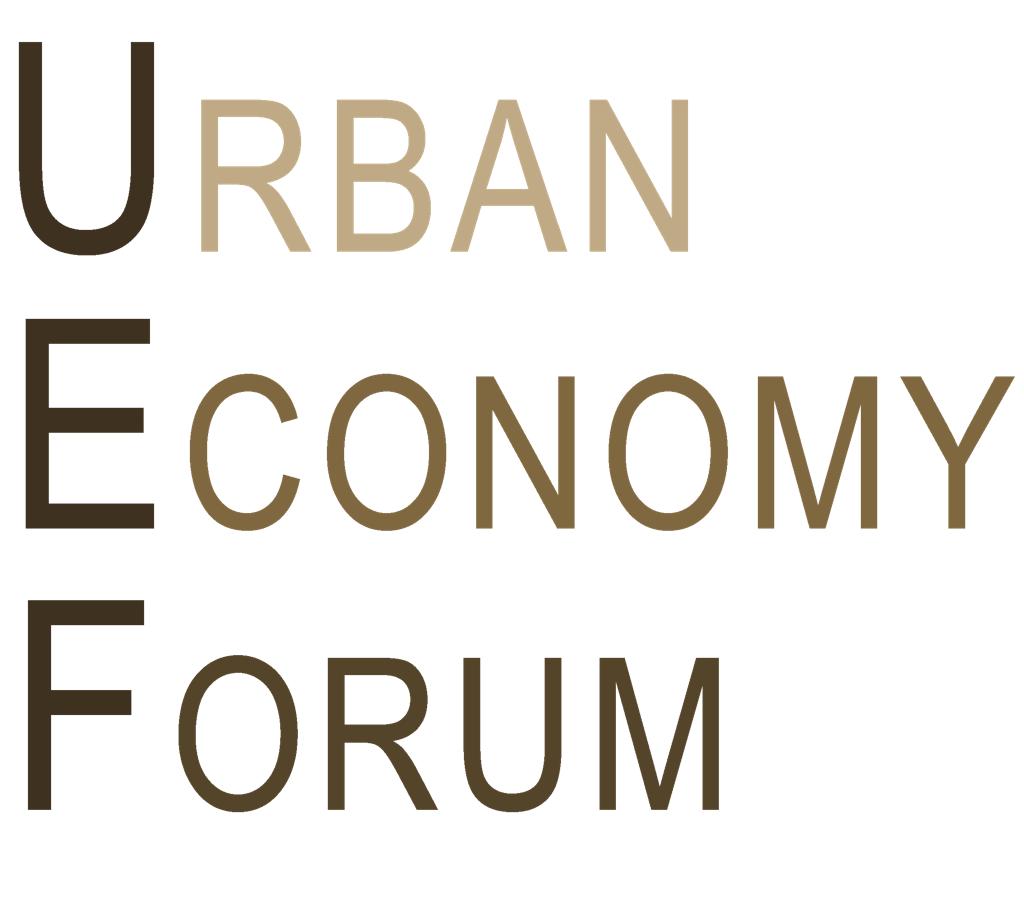Blogs


About the Authors
Bhuvana Nanaiah is an aspiring Urbanist, currently pursuing her master’s in Urban Ecological Planning, at The Norwegian University of Science and Technology, Norway. She believes that climate-neutral cities can only be achieved in a sustainable manner when architecture, planning, and technology are juxtaposed with social innovation.
Changappa Kongiranda Ganapathy is a distinctly proficient and ambitious Mechanical engineer who completed his Master of science degree in Mechanical engineering from Linköping university Sweden. Presently he is pursuing robotics and automation program at Conestoga College, Canada. Changappa has several successful projects in the field of design automation, product development and optimization.
August 29, 2022
INNOVATION AND TECHNOLOGY: TOWARDS KNOWLEDGE-BASED URBAN FUTURES
Chapter 9 of the World Cities Report 2022
Summary
The growing need to decarbonize life as we know it, and the rapid advancement of the digital sector have had significant impacts on the sociotechnical development of urban life in recent years. While the innovation arising from the confluence of these two areas has opened new avenues for the betterment of everyday reality, they have also created new paradigms to be investigated under the umbrella of urban policy, governance, and planning. The 9th Chapter of the World Cities Report 2022, therefore, explores the role of digitalization in cities, the challenges that could potentially arise from it, and how innovation in the digital realm must be potentially steered to also benefit social and environmental realms.
Generally, in cities, the physical infrastructure, such as roads, buildings etc, is combined with soft infrastructure, in the form of digitalization to deliver efficient services. Moreover, the agglomeration of people in dense space makes cities a vital host for fostering dynamic resource sharing, networking, and collaboration, which further leads to innovation. Urban innovation, however, should not just limit to the technical sector, but also needs to consider social and institutional aspects to create better social outcomes and put the interests of diverse local communities at the centre stage. It should be context-specific and must be tailored based on local conditions taking into account, for example, available resources, capacities, and socio-cultural practices. Committed leadership and dedicated staff support, that promote public-private partnerships, and collaboration between municipalities go a long way in bringing forth innovations that have a more holistic outlook.
Automation, a by-product of digitization is transforming existing modes of labour and thereby leaving a mark on urban economies. The opportunities provided by digitization were particularly noted during the COVID-19 pandemic, wherein several sectors switched to virtual or hybrid work culture. In parallel to this, automation has also created new avenues for informal labour by providing unprecedented opportunities for self-employed individuals, and small and medium businesses. The platform provides flexibility, autonomy, and additional income to interested labour forces.
However, the pandemic also revealed that the lack of access to technology could aggravate socio-economic inequalities. Furthermore, the process of automation has put several jobs at risk, affecting both the formal and informal sectors. For example, chatbots or virtual agents increasingly replace municipal staff, such as in Helsinki, Finland, where chatbots help process residents’ parking permit applications. This emerging trend has also created a section of underpaid workers with little social protection. Therefore, active steps to promote inclusivity and access to services need to be undertaken by cities to avoid these adverse effects.

The World Cities Report 2022 was published by UN-Habitat on June 29, 2022
Digital inclusivity can be implemented by considering two aspects: Firstly, by ensuring the affordability of tools and services, and secondly by striving towards digital literacy amongst users. Recent research has further showed that in any given local context, there exists two sides- The right side of the digital divide (young, male, well-educated, employed) , who generally report more positive outcomes from access to digitalization, and the wrong side of the digital divide (older persons, female, those with low-level education and occupation), who find it difficult to cope with digital advancements. This must also be acknowledged in urban strategies towards driving digital literacy.
Empowering citizens to actively benefit from the advancement in ICT (Information and communications technology) has created opportunities for citizen inclusion in decision making through e-governance. Examples include: IdeaScale (Atlanta), which lets participants submit ideas, comment as well as vote on them; and BudgetAllocator (Bayswater), used for participatory budgeting. Using technology in citizen engagement has also helped tap into local knowledge and make informed policy decisions. Now, residents without pre-existing technical skills can participate in creating their own digital solutions to deal with urban issues, through “community
technology making”.
The World Cities Report 2022 notes that cities that strive to implement these ‘smart city’ strategies however, often struggle with four common challenges:
- Respect city-specific contexts- Smart city projects risk being divorced from the reality of ordinary cities if they subscribe to a form of smart urbanism that espouses a clean slate view of a city run on hyper-efficient urban technology.
- To ensure a people centred approach- The conceptualization and implementation of smart city initiatives risk of an overly technocratic approach, sometimes acting in the service of technology and corporate interests aimed at expanding new urban markets for digital technologies.
- Provincialize smart cities- The smart-city practices implemented in the global north, with better capital, are often uncritically assumed to be the most ideal solutions, and consequently replicated in developing countries that do not have the same kind of resources.
- Ensure environmental sustainability - There is a concern that smart-city objects often prioritize economic goals and consequentially side-line environmental needs.
One way to effectively deal with these challenges is by the use of “Frontier Technology”, which can be defined as, “innovations in science, technology, engineering and mathematics which are no longer in the research and development phrase but have yet to see mainstream market penetration and public adoption”. These can be designed to be relatively cheaper and modified to be suitable to local contexts. Local institutions and stakeholders must moreover take decisions that create environments for local design and adaptation of urban technologies. Converging smart and green technologies, for instance, through the decarbonization of energy grids, the electrification of transportation and the application of renewable energy technologies to commercial and domestic buildings, while mandating circular economy production strategies will help meet emission targets.
In addition to the challenges mentioned above, innovation comes with data related risks such as biases of automated processes, data misuse, privacy breach, etc, which need appropriate, contextual mitigation processes. Creating innovative technology also relies on ample extraction raw materials and toxic waste production, which could adversely harm biodiversity. Cost- benefit analysis, in conjunction with answering the question, “to what extent do urban technological innovations result in better outcomes for residents and the environment?” is therefore crucial at every stage of development.
To conclude, urban fabrics are accelerating towards change due to advancements in the digital realm. While such innovations offer many merits to development, they come with their own set of challenges. By viewing innovation from not just a technical perspective, but also from social, economic, institutional and environmental standpoints, including investment in skills training and support for community partnership, existing urban contexts can transition towards sustainable urban futures.
Reflection
By 2050, the populace living in urban communities will increase two-fold. Smart city endeavours rooted in innovation create framework to establish a sustainable urban environments.1 Advanced technologies, such as IoT, blockchain, and automation, supported by artificial intelligence have shown promising impacts on the viability of urban environments and conveyed a sustainable pathway for future urban developments.
As discussed in the summary, technological innovations often pollute the environment. Today, secondary industries that transform raw materials into finished products have a major contribution to contamination, as these industries tend to produce waste gas emissions, wastewater, and deposits in the economic sector. Thus, a lot of manufacturing companies have done what they could, to assess the effects of developments on the environment, such as, streamlining the manufacturing plant operations to be greener, using more energy-proficient operations that generally reduced the amount of contamination produced, etc. By doing this, organizations from various businesses in the technological sectors are striving to track down ways of diminishing their carbon footprint. Indeed, even the littlest commitments can fundamentally impact the environment positively, particularly if many companies work together to help advocate for the well-being of the ecological sphere. For instance, air conditions or HVAC systems these days use climate-friendly additives for oil compressors as it consumes less energy and does not emit destructive or dangerous wastes, making them less harmful to the environment. In other words, a small step goes a long way in combining technological and environmental innovations.
The article stresses the importance of public authorities to additionally work on the framework and arrangements for ecological contamination control, by laying out strict standards and security regulations. It also emphasizes the possibility of economic objectives and prejudices of creators taking precedence over environmental and social goals while implementing technological innovations. The confluence of institutional frameworks, the transition in social mindset towards sustainability and the economic interests of businesses has, of late, lead to a new challenge to be tackled, “greenwashing”. Greenwashing is defined as “the intersection of two firm behaviours: poor environmental performance and positive communication about environmental performance.”2 With growing global consensus favouring environmental sustainability, several modern enterprises deceptively present themselves to be kinder to the environment, so much so, that terms such as “sustainability”, “green”, “ecological”, have often been casually thrown around to attract a larger demography of consumers. It is vital that such contested issues arising as a biproduct of the global attempts to combine technological and environmental innovation are also addressed on local, national and international levels.
Automation in urbanization has changed the general competence and improved the efficiency of systems. For instance, there is an assortment of quality sensors that are placed in public transport, smart furniture, smart lights, smartphones, connecting devices, bus stations, and bikes using Internet-of-things (IoT). This artificial intelligence (AI) powered technology is used to gather, examine and optimize data to make daily life easier and more efficient. However, decision-makers must reflect on who would own the data, how it should be shared, and the possible security issues that could potentially arise from this data being leaked.
Another important point worth investigating is that the life expectancy of smart city models is often not examined. Moreover, innovations in the technological sector accelerate quicker than the capacities of individuals to attempt to adjust and utilize them. This makes it vital to reflect on whether people can keep up with the pace of technological advancements and bring in apt social and institutional innovations that can balance the equation.
The 9th Chapter of the World Cities Report 2022 just lays out a broader model of the interaction of impacting factors in innovation and development. This establishes the groundwork for additional research. Moreover, colossal contrasts between urban areas (at the authoritative level, and additionally topographical area, for instance) imply that this hypothetical model has space for further evolution.
References
1- Goi, C. L. (2017). The impact of technological innovation on building a sustainable city. International Journal of Quality Innovation, 3(1), 1-13.
2- Delmas, M. A., & Burbano, V. C. (2011). The drivers of greenwashing. California management review, 54(1), 64-87.
